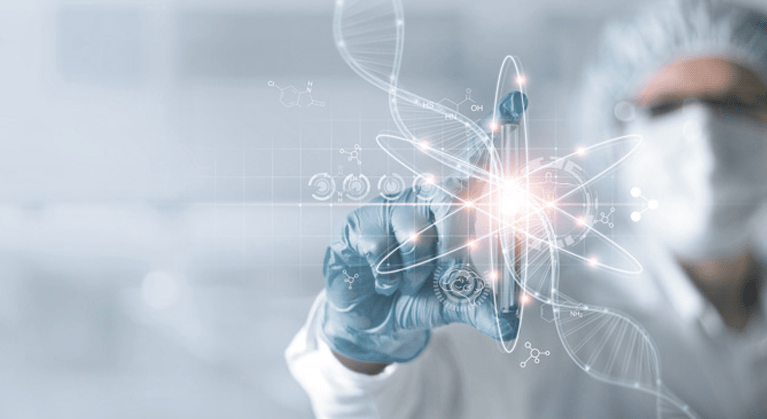
Science and technology is the core power source to promote the development and progress of human society. Historically, the steam engine era, the electrical era and the current Internet era have profoundly changed the pattern of the world and the face of mankind. Historically, the development of science and technology will not be smooth sailing. The first spring of the development of artificial intelligence came to a bottleneck period after 1970, and entered a quiet period of decades. At present, the development of artificial intelligence has inevitably entered the deep-water area again after Lecun's handwritten character recognition, Imagenet's high image classification and recognition rate, alphago's success in the field of go, and alphafold's release of the most complete three-dimensional structure database for predicting human protein and the glory of deep learning to solve MIP problems. The core work objectives include: 1) promoting and empowering the development of non AI industries; 2) Its own technological level continues to evolve.
1.Promotion and empowerment of the development of non AI industries
The industry's demand for AI is significant and enthusiastic. There are unrealistic visions of AI by industry personnel, but most of them are solid rigid requirements. Taking visual intelligence applications as an example, it is mainly reflected in:
(1)Daily management application
a)Requirements for single point applications: such as face recognition, license plate recognition, character recognition and other target recognition applications, such as target detection applications for road traffic flow, station, wharf and airport passenger flow. These application requirements have high implementation difficulties in complex practical environments, such as multiple people / objects, occlusion, overlapping backgrounds, but they can still be well met by companies with high AI technology.
b)Requirements of single process applications: target tracking applications such as tracking personnel or vehicle tracks, recognition and continuous tracking of personnel posture, these applications are currently difficult to ensure tracking accuracy, and even continuity is difficult to achieve, but the requirements are very significant.
c)Requirements for combined applications: Although single point and single process can meet the analysis of targets under specific conditions, the requirements for AI analysis in the actual application process are combined, and single point and single process algorithms can not meet the requirements of users for algorithm changes in practice
(2) Machine substitute application
d)The demand for unattended stations: such as substations, base stations and other sites far away from the operation center, the inefficiency of manual inspection is common, and the voice for AI to replace people is very high. The requirements of these applications are combined application requirements, which are highly related to the use practices and operating procedures of the industry. Even if AI can not meet all the work for people, it is of high value to greatly reduce inefficient labor, realize real-time intelligent analysis of working conditions and even intelligent maintenance.
(3) Intelligent equipment application
e)Self driving demand: although at present, judging from the popularity of auto driving, AI vision seems to be close to success, according to the requirements of SAE's self driving grades L4 and L5, there is still a big gap from the real "unmanned" intelligent driving. Many AI technologies that driverless rely on are data-driven and lack cause and effect explicability. Because of the complexity of the real scene, data cannot achieve full coverage and pre training for all situations. The continuous occurrence of driverless accidents also reminds people that basic theory still has a long way to go. The demands of these applications exceed the above combined application demands, and there are urgent and natural demands in the processing of multi-source data and multi-modal data. Although the existing solutions are nominally aimed at multi-source, and the data is also multi-modal, the processing is separate, such as radar, video, infrared, ultrasonic are independent, and the so-called "data fusion" is the fusion only at the decision-making level, It can not reach the intelligent level after multimodal implementation, and the lack of active exploration of unknown conditions will bring great security risks. For example, driverless cars lack autonomous interaction similar to human exploration. When the video and radar are temporarily invisible (or the target cannot be analyzed), they only rely on the unreliable communication between the car and the car road for information coordination. This security situation is completely passive, and the security guarantee has degenerated to the most basic level.
2.Its own technology level continues to evolve
According to yoshua bengio, one of the winners of the 2018 Turing prize, AI at this stage is good at dealing with human intuitive, fast, unconscious, nonverbal, habitual processing functions, that is, system 1, intuitive system; In the face of relatively slow, logical requirements, sequencing, consciousness, language expression, estimation, planning, reasoning functions are insufficient, that is, system 2, logical analysis system. In the process of enabling non AI industries, we have found that the demand from the industry is more similar to the analysis demand of system 2. This demand is both a challenge and an obvious opportunity for differentiation for the AI industry. Only by actively and quickly responding to the real, changing and logical requirements of users can AI really enter the core of the industry and support the upgrading and transformation of its main businesses. At the same time, AI will be troubled by the specific development process and the accuracy of algorithms in specific scenarios on multiple occasions, AI professionals need to deliver more results to users' analysis needs quickly in order to meet the needs of similar and different types of massive users. Failure to achieve this will make artificial intelligence likely to enter a low tide again.
Source: Daiming Technology
follow us

Room 1801, Hangzhou Bay wisdom Valley Building, No. 233, Yonghui Road, ningwei street, Xiaoshan District, Hangzhou, Zhejiang, China.Monday to Friday: 9:00-12:00, 13:30-18:00 (except holidays)
copyright Hangzhou Daiming Technology Co., Ltd 浙ICP备2021037675号-1 浙公网安备 33010902003339号 DESIGN BY : WEETOP